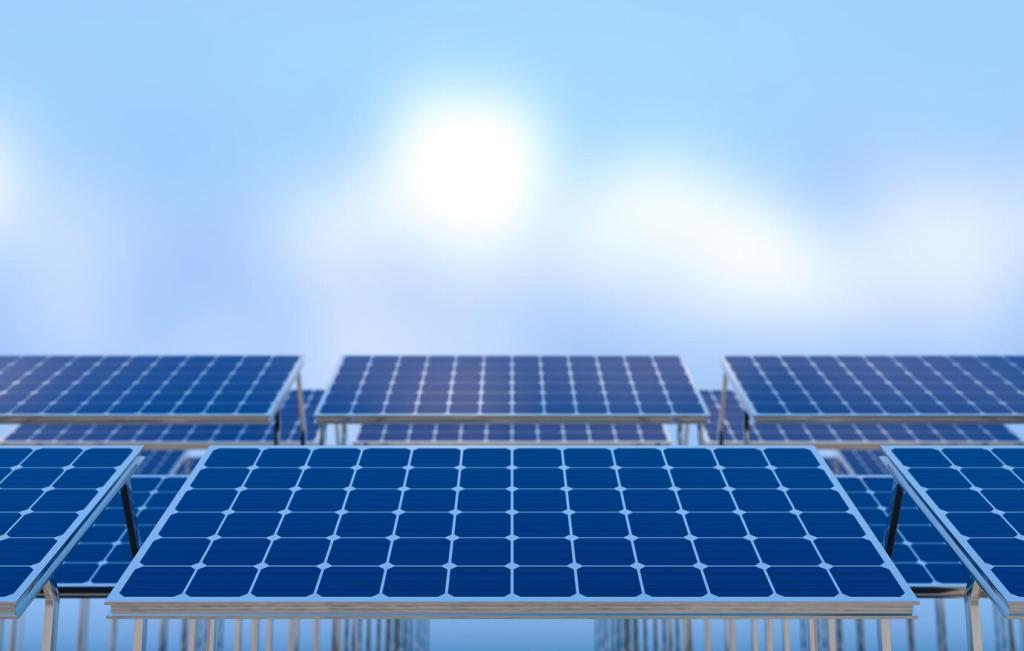The Role of Renewable Energy in Urban Building Design
The integration of renewable energy sources within urban building design has become increasingly crucial as cities strive to reduce their environmental impact, achieve energy efficiency, and enhance urban resilience. Renewable energy solutions such as solar panels, wind turbines, geothermal systems, and advanced building materials are transforming the landscape of modern architecture. These solutions not only address urgent climate challenges but also redefine the way we construct, operate, and inhabit urban spaces. This page explores the multifaceted role of renewable energy in urban building design, covering its significance, key technologies, design principles, and the broader impact on sustainability and urban life.

Importance of Renewable Energy in Urban Environments
Supporting Climate Change Mitigation
Renewable energy integration in urban design plays an essential role in combating climate change. Urban buildings generate high volumes of carbon emissions due to heating, cooling, and electricity needs. By deploying solar, wind, or geothermal technology at the design stage, cities can drastically reduce operational emissions. This proactive approach helps meet international climate commitments and supports local air quality initiatives. Early integration minimizes retrofit costs and ensures that environmental benefits are realized over a building’s lifespan. Achieving net-zero energy buildings is increasingly possible, encouraging further innovation and setting new standards for sustainable urban growth.


Enhancing Energy Security and Resilience
Urban areas are vulnerable to energy supply disruptions due to extreme weather, outdated infrastructure, and fluctuating fuel prices. Renewable energy solutions contribute to a more resilient urban energy grid by decentralizing power generation and reducing dependence on remote sources. Incorporating renewables into building design allows for onsite generation and storage capabilities, providing reliable backup power during emergencies. Enhanced energy independence reduces vulnerability to supply chain shocks and strengthens the overall resilience of urban communities. Buildings designed with renewables can play a vital role in disaster response and recovery, ensuring that critical services remain operational.
Key Renewable Energy Technologies for Urban Buildings
Solar Power Integration
Solar energy is the most widely adopted renewable technology in urban building design, thanks to its adaptability and declining costs. Through photovoltaic panels or solar thermal systems, buildings can generate electricity and heat, often offsetting a significant portion of conventional energy use. Architectural integration is key; rooftop installations, solar facades, and innovative shading solutions maximize energy capture while enhancing aesthetics. Advanced building-integrated photovoltaics (BIPV) are being developed to blend seamlessly into roofing materials or curtain walls. As storage technologies improve, solar power’s intermittency issues are mitigated, enabling reliable round-the-clock energy supply for urban structures.
Harnessing Wind Energy in Cities
Capturing wind energy within urban environments poses distinct challenges, but advances in compact wind turbine technology are making it more feasible. Rooftop and vertical-axis turbines are specifically designed to function efficiently in turbulent or low-wind conditions typical of urban areas. These systems can supplement electricity generation, especially when combined with solar panels for hybrid renewable setups. Attention to siting, building orientation, and structural support ensures safe and effective operation. Architects and engineers are now integrating small-scale wind turbines as both functional and sculptural elements, adding dynamic visual interest to building skylines while contributing to energy goals.
Geothermal Solutions for Heating and Cooling
Geothermal energy provides an efficient, renewable method for heating and cooling urban buildings through ground source heat pumps. These systems leverage the stable temperatures beneath the earth’s surface to regulate indoor environments with minimal external energy input. Geothermal installations are especially suited to larger or multi-purpose buildings, such as residential towers and commercial complexes. While upfront investment and drilling requirements are higher than some alternatives, the long-term energy and maintenance savings are substantial. With proper integration, geothermal solutions offer reliable thermal comfort, year-round performance, and significantly reduced carbon emissions for urban developments.

Passive Design Strategies
Passive design capitalizes on natural forces—such as sunlight, wind, and thermal mass—to minimize reliance on mechanical systems and maximize building efficiency. Factors including orientation, window placement, shading, and insulation are meticulously engineered to reduce energy loads and optimize conditions for renewable integration. Passive strategies prepare the groundwork for active systems by creating a high-performing building envelope. For instance, thoughtfully placed windows allow maximum daylight while reducing unwanted heat gain, making the building more suitable for photovoltaic panels and reducing HVAC needs. Such design awareness ensures that renewables deliver their full potential in real-world settings.
Active System Optimization
Active systems, such as solar photovoltaics, wind turbines, and geothermal heat pumps, require careful integration with building controls and energy management infrastructure. Sizing and siting these systems appropriately ensure maximum return on investment and operational performance. Sophisticated building automation systems optimize energy flows, storage, and consumption based on real-time demand and generation. Designers must address technical challenges, such as load balancing and grid interaction, to achieve seamless operation. Regular performance monitoring, smart metering, and adaptive controls contribute to ongoing efficiency improvements, adapting to occupants’ needs and evolving climate conditions for optimal sustainability.
Architectural Aesthetics and Urban Integration
The visual integration of renewable energy systems is increasingly prioritized in urban building design, balancing energy production with architectural quality. Building-integrated renewables—solar facades, roof gardens with solar canopies, or wind turbines as sculptural features—highlight a structure’s sustainable aspirations without detracting from urban aesthetics. Architects collaborate closely with engineers to ensure that renewables enhance rather than compromise the visual language of a building. This approach helps allay concerns about the appearance of new technologies, promotes public acceptance, and makes renewable energy a visible, celebrated aspect of the city’s identity.
